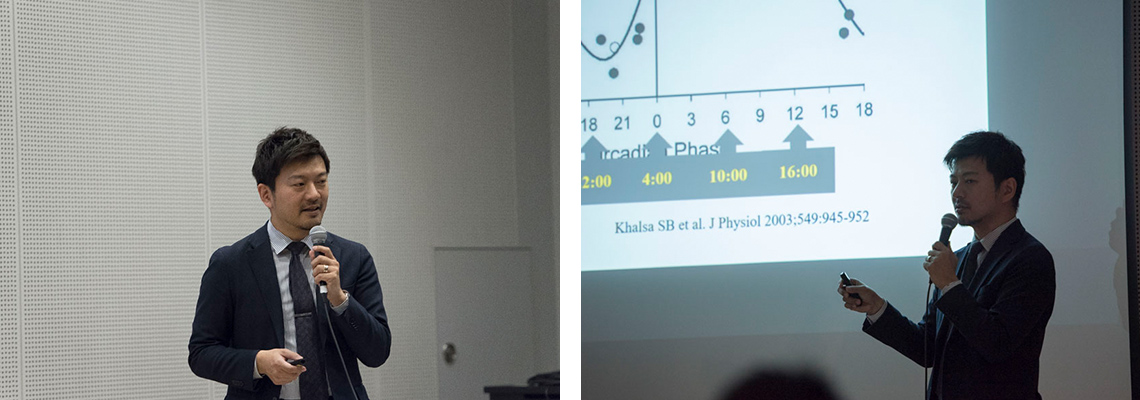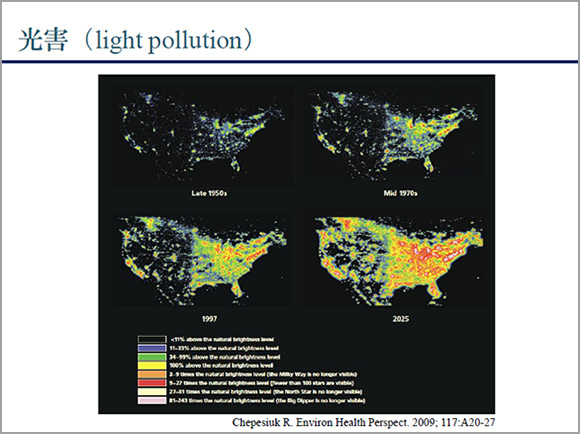The effects of lighting on the human body has long been studied. Are the study results still relevant today? What kind of health-related issues do we need to consider anew, since the primary light source has shifted to LED? Associate Professor Kenji Obayashi at Nara Medical University School of Medicine, an expert on light and health, introduced the latest information on health and lighting.

We are exposed to various types of light in our daily lives. Obayashi explained that opportunities of light exposure are increasing in the modern world, as different devices including tablets and PCs emit light. The night is getting brighter, causing light pollution these days. Animal and plant researchers have been debating the light pollution problem, yet the effects on humans are not well understood or widely studied. In what kind of lighting environment are we sleeping? Currently, we don’t have the data to precisely answer such a basic question.

In order to examine the effects of light on health, Obayashi began a housing environment study, named “Heijo-kyo Study” examining the lighting environment in the real world and its health effects. A door‐to‐door survey of all houses was conducted in the study. Residents were asked to wear a wristwatch-type illuminance sensor during daytime activities. The nighttime lighting environment was measured using a stationary illuminance sensor in the bedroom. He studied the effects of light on humans and health, based on the obtained data, such as sleep-related melatonin hormone level, quality of sleep, blood sugar level, and depression index.

What can be said from a medical standpoint is, quite naturally, to bask in an abundant amount of light in the daytime, not at nighttime. Obayashi said that since humankind evolved in the environment of the earth, we have a circadian rhythm with a 24.2-hour period, which is the foundation of our biological rhythm adapted to the earth’s light environment. Therefore, nature provides hints for healthy light.

Finally, Obayashi concluded that the important things about lighting are not only illuminance and wavelength but also timing. Taking into account technical factors in lighting design —such as how to shut out lights from our eyes during the nighttime while providing lots of light during the daytime—may likely contribute to human health. He said his presentation would be meaningful if the audience would design lighting fixtures with this in mind.
【Date & Time】13:00‒14:00, March 6, 2019
【Venue】Room 102, 1F, Conference Tower, Tokyo Big Sight
【Speaker】Kenji Obayashi, Associate Professor, Nara Medical University School of Medicine
【Moderator】Chiine Sugawara, filament
【Organizers】IALD Japan, JLMA, Nikkei Inc.
Profile
Kenji Obayashi
Dr. Obayashi earned his MD at Tokyo Medical University, Japan. He completed post-graduate training in internal medicine and clinical fellowship in adult cardiology from Tokyo Women’s Medical University Hospital, Japan. His current special interests include epidemiology related to circadian biological rhythm (Chronoepidemiology).
Chiine Sugawara
Established “filament” in 2010 after working“Worktecht” as lighting design office .







